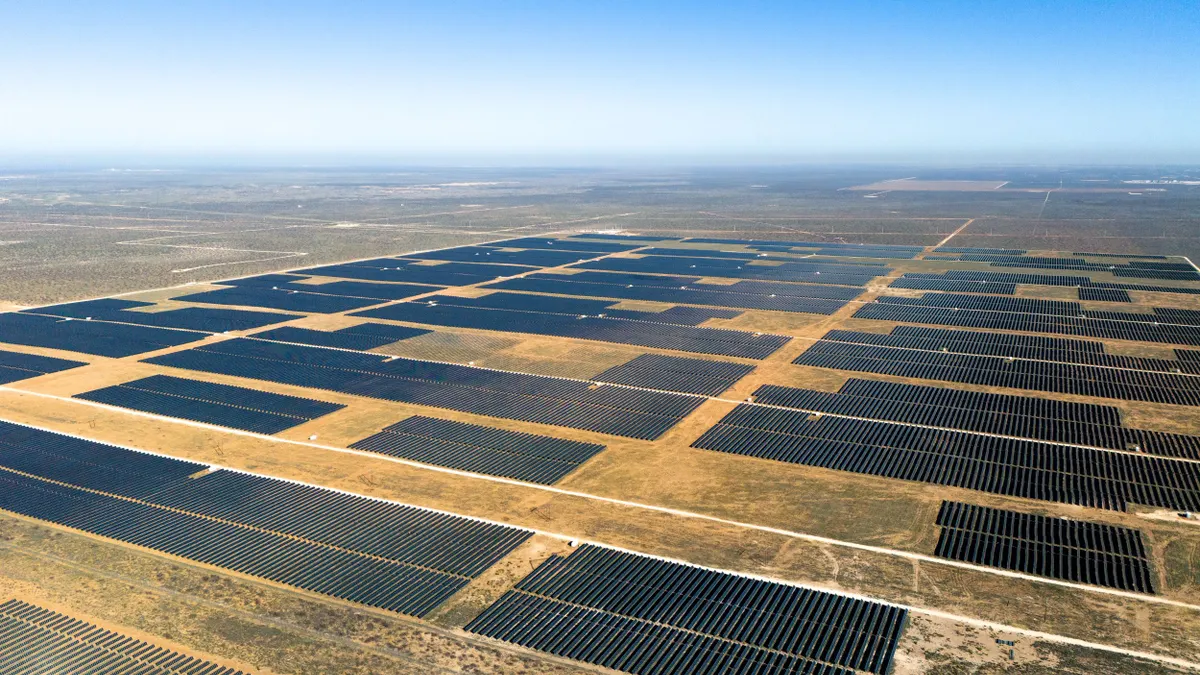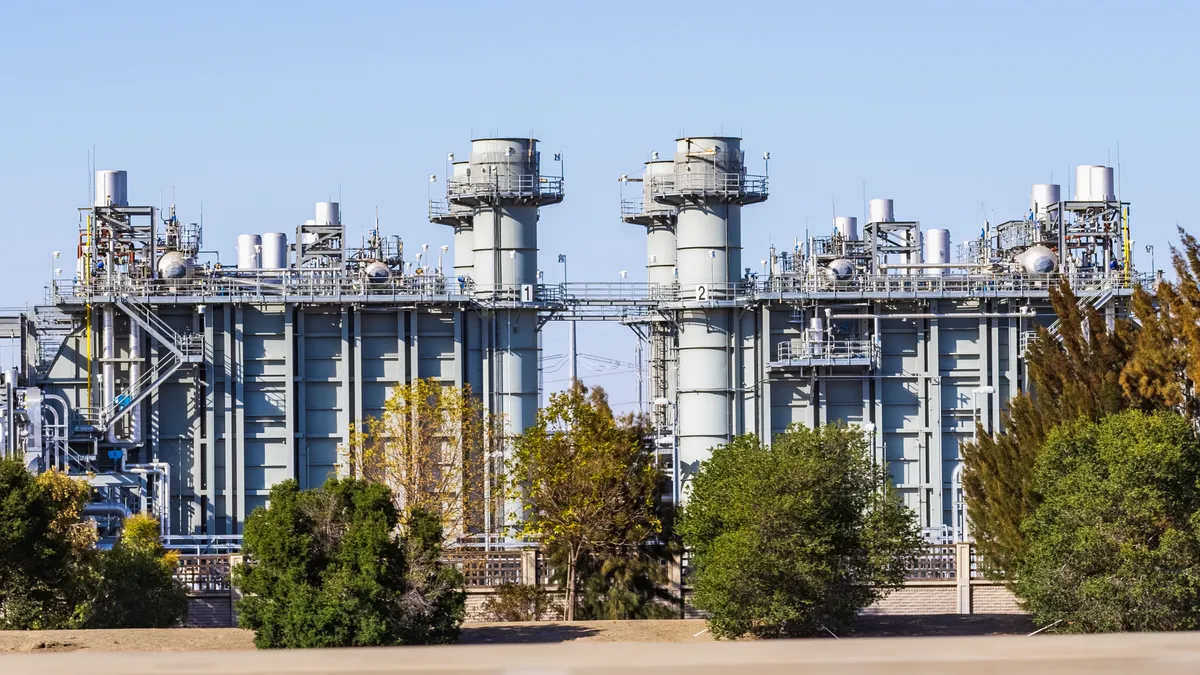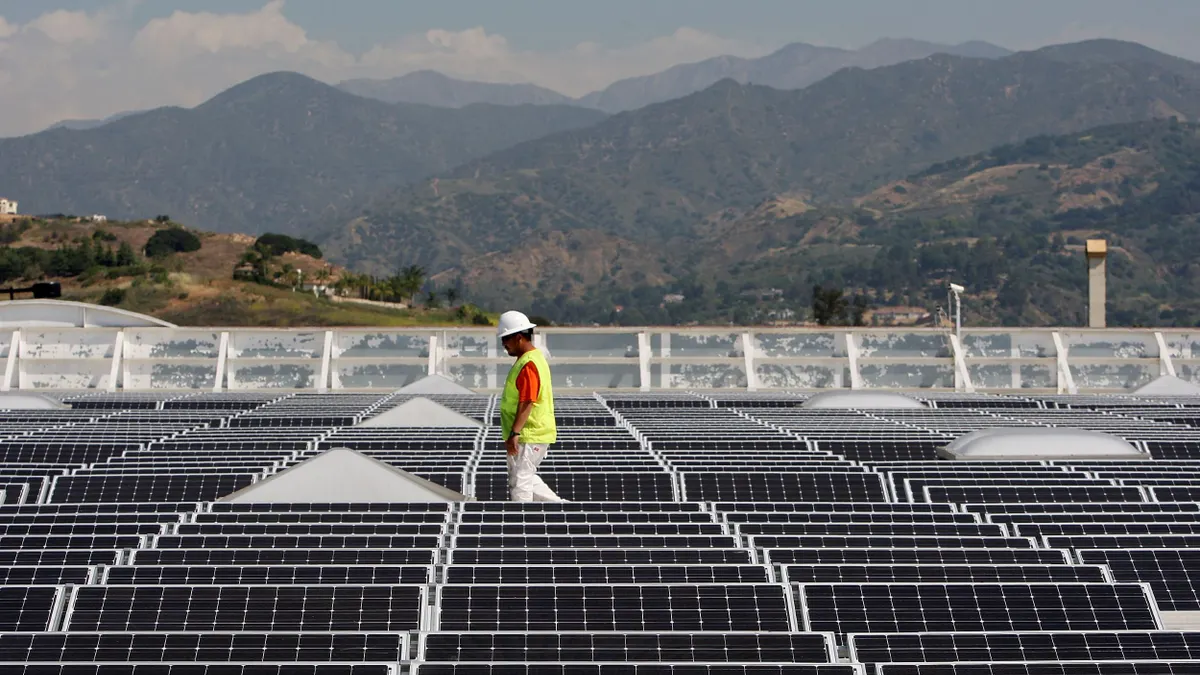The following is a contributed article by Levin Nock, technical manager at DesignLights Consortium.
The recently published MIT report "Deep Decarbonization of the U.S. Electricity Sector: Is There a Role for Nuclear Power?" is aptly titled as an interesting research question. However, in the recent Utility Dive opinion based on the MIT report, "Too much wind and solar raises power system costs. Deep decarbonization requires nuclear", the word "requires" is an unfortunate exaggeration.
A more accurate title might be "Deep decarbonization might possibly include nuclear, if and only if 'clean' nuclear power delivers flexible electricity at a levelized cost under $0.076 per kWh, in spite of the nuclear industry's notorious and ongoing propensity for massive cost overruns."
According to the MIT report on p.9, "the low (~$0.050/kWh) and high (~$0.076/kWh) nuclear cost scenarios are pretty clearly bounds on the additional intermittency system costs—at $0.076kWh nuclear phases out, and intermittency is addressed largely through curtailments, storage, and flexible gas generation."
In other words, there will only be a potential place for nuclear power if it is guaranteed to deliver electricity at a levelized cost under $0.076/kWh. Given that conclusion, a few questions for further research come to mind.
How likely are cost overruns?
First, what are the chances that new, clean nuclear power can be delivered at a budget price without cost overruns?
"The first generation of nuclear power plants proved so costly to build that half of them were abandoned during construction. Those that were completed saw huge cost overruns, which were passed on to utility customers in the form of rate increases. By 1985, Forbes had labeled U.S. nuclear power 'the largest managerial disaster in business history.'
The industry has failed to prove that things will be different this time around: Soaring, uncertain costs continue to plague nuclear power in the 21st century. Between 2002 and 2008, for example, cost estimates for new nuclear plant construction rose from between $2 billion and $4 billion per unit to $9 billion per unit, according to a 2009 Union of Concerned Scientists (UCS) report, while experience with new construction in Europe has seen costs continue to soar," reads a July 21 UCS blog.
This does not bode well for a new generation of completely redesigned, so-called "clean" nuclear plants, because if the designs are so completely new, then this generation could have growing pains comparable to those of the first generation.
For instance, the proposed cost of the Duke Energy Levy County Nuclear Power Plant rose from an original $3.5 billion (or $6 billion, depending on who you ask), to over $22.5 billion, before being canceled in 2017, due to a projected cost overrun of at least 375%. While some financial details about the new Georgia Power Vogtle nuclear units under construction are not public, the first two reactors exceeded their original cost projections by 1,200%.
If nuclear power can truly be delivered for $0.05 or $0.06 per kWh, then there might be a place for it in a decarbonized future. However, a cost above $0.076/kWh will invalidate the entire enterprise.
Since actual cost overruns appear likely to be in the range of 300% to 1,200%, the future of nuclear power only appears bright if original plans can offer electricity at a levelized cost under a penny per kWh.
What new markets will develop for inexpensive intermittent electricity?
Future research could consider that the market will evolve so that power marked as "curtailed" in the current model will be sold to new loads adapted to use intermittent power at a discounted price — such as aluminum smelters, cellulosic ethanol plants and hydrogen plants.
In other words, much of the power that appears to be curtailed in the model, could actually be sold, if it is reliably available at a discounted price in appropriate industrial areas. "Reliably" meaning enough of it is produced each year to make a factory economically viable; but not necessarily that the power is predictable at an hourly, daily or even monthly scale.
How exactly will future load growth relate to capacity?
The MIT report assumes a prescribed annual demand path for electricity based on the EIA Annual Energy Outlook (AEO).
The AEO appears to assume a constant load factor. Future research could consider that while the total electric load is likely to rise due to electrification of the transportation and building thermal control sectors, these new loads will bring with them substantial new storage capacity, reducing the need for excess generation/transmission/distribution capacity, and raising the effective load factor.
For example, EVs can be charged during the daytime with sunlight, or at night with wind power. Depending on their usage pattern, some EVs can be charged in the few hours of each day or week with the lowest Time of Use rate.
As building codes evolve and Time of Use rates become ever more common, buildings will develop higher load factors, because (A) thermal and electrical storage will reduce diurnal load variability; and (B) better envelopes and HVAC equipment will reduce seasonal load variability.
As examples of (A), thermal mass, phase-transition materials, and ice storage systems will reduce the range of daily warm-cold variability. As examples of (B), high performance buildings devote a relatively small amount of energy to thermal comfort, and a larger portion to plugloads.
While plugloads have some diurnal variability, a diverse assortment of plugloads may offer opportunities for demand reduction through intelligent scheduling. In terms of the total capacity needed on the grid, an increase in the load factor has the potential to compensate for the increasing total load. Thus, the grid could potentially serve a larger load with a smaller generation/transmission/distribution capacity.
The MIT model shows a strong future for wind and solar power, expanding to at least 40% of grid capacity, and probably beyond. The outlook for new nuclear power appears dire, when considered in the context of the nuclear industry's ongoing propensity for massive cost overruns.
The views expressed above are those of the author and do not represent the DesignLights Consortium or any of its members





















